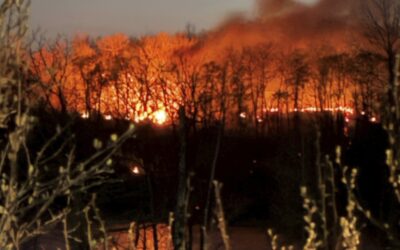Team plans to examine how temperature and flammable gasses impact fuel conditions

BEND, Ore. (AP) — An Oregon State University project backed by more than $2 million in federal money could help firefighters better predict how wildfires behave in Central Oregon and beyond.
The Bulletin reports a team from OSU’s College of Engineering was chosen by the U.S. Department of Defense to spearhead a four-year research project to determine what conditions affect the way different plants and shrubs burn.
David Blunck, assistant professor of mechanical engineering and team leader, said the study, which is slated to begin this summer, could make wildfire projections more accurate and may ultimately improve the conversation regarding when and how trees burn.
“I think this could really change how people see it,” Blunck said.
Rather than focusing just on how different trees burn, Blunck’s team plans to examine how temperature and the presence of flammable gases impact fuel conditions.
The team, which includes around 10 OSU employees, grad students and U.S. Forest Service personnel, will take pencil-sized samples of different trees in Oregon’s forests — including Douglas fir, grand fir, western juniper and ponderosa pine — and examine commonalities in how they burn. From there, the OSU contingent will accompany the Forest Service or The Nature Conservancy during controlled burns to see how those lessons apply in the forest, using those findings to better model how fires behave under different conditions.
“Our goal is basically to better understand those common processes,” Blunck said.
The study is part of a larger effort to bridge the gaps between laboratory wildfire studies and controlled burns in the forest. Blunck said most lab research uses dead trees or parts of dead trees to simulate how live trees behave during a wildfire, even though the samples don’t perform the same way during burns.
All contents © copyright 2019 Associated Press. All rights reserved.




